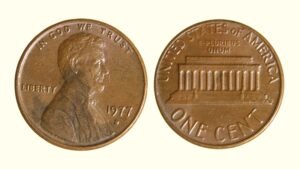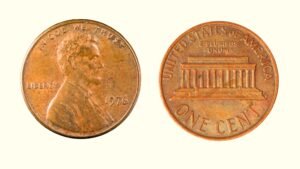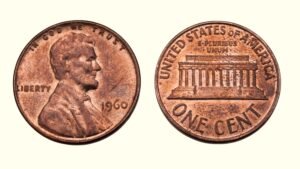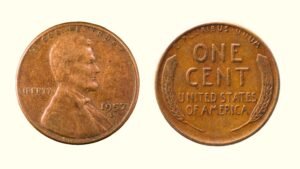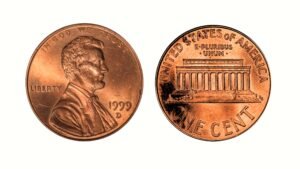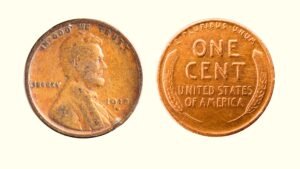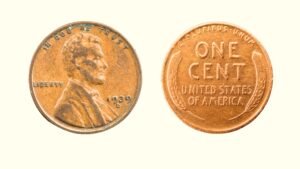Think your old 1963 Lincoln penny’s just a penny? Think again because this coin could be hiding a fortune in plain sight. In fact, it can fetch an eye-popping price of over $40,000 at auction. But what really makes the 1963 Lincoln Memorial copper coins so valuable?
From elusive mint marks to interesting minting errors, the 1963 penny bears many features that can hike its worth from face value to a few thousand dollars This guide explains into the nitty-gritty of identifying valuable variations, mint marks, and rare errors that can multiply your small cent’s worth!
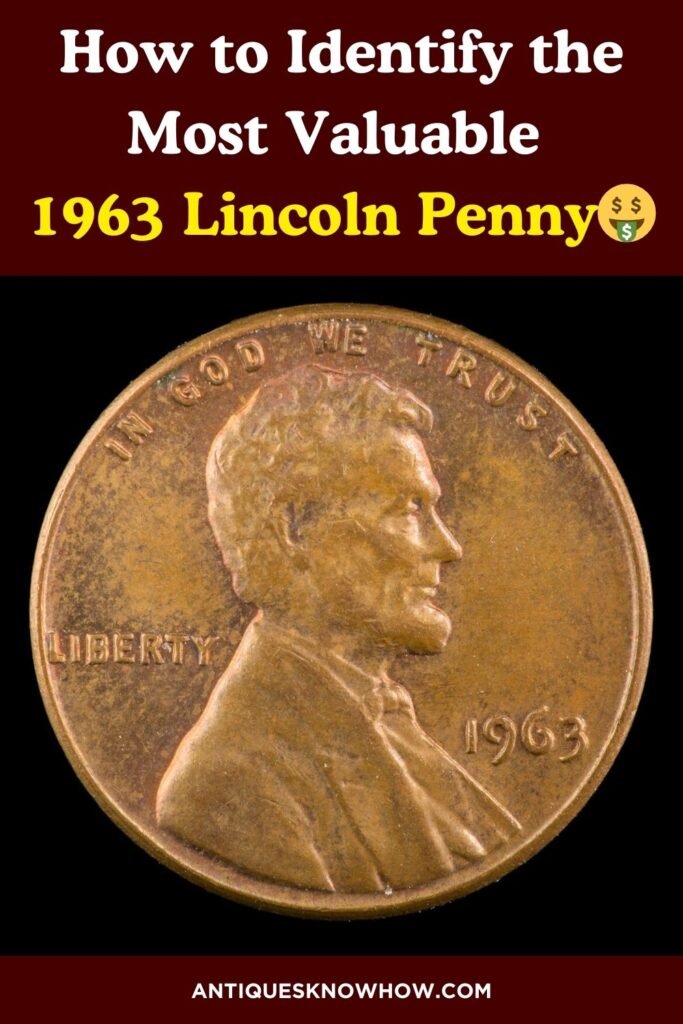
Brief History of the 1963 Lincoln Penny
The 1963 Lincoln penny is a significant part of the series first introduced in 1909 to celebrate the centennial of Abraham Lincoln’s birth. It was designed by Victor David Brenner featuring Lincoln’s profile on the obverse and wheat stalks on the reverse. The design remained unchanged until 1959 when it was replaced by the Lincoln Memorial design.
In 1963, the U.S. Mint continued producing the Lincoln penny in large quantities, with a total mintage of over 2.5 billion coins. The 1963 Lincoln penny is also significant for its potential minting errors, which can greatly increase its value.
| 1963 Lincoln Memorial Cent | Key Features & Facts |
| Coin Composition | 95% Copper, 5% Tin and Zinc |
| Minting Location | Philadelphia, Denver, San Francisco |
| Minting Year | 1963 |
| Face Value | 1-cent (0.01$) |
| Weight | 3.11 grams |
| Diameter | 19.05 mm |
| Thickness | 1.52 mm |
| Designer | Victor David Brenner, Frank Gasparro |
| Mint Marks | D – Denver Mint, S – San Francisco Mint, No Mint Mark – Philadelphia Mint |
| Total Mintage | 2,531,206,045 coins |
How to Identify a 1963 Lincoln Penny Design & Composition
To spot a real 1963 Lincoln penny and assess its value, you must recognize its distinct design features and composition.
1963 Lincoln Penny Obverse:
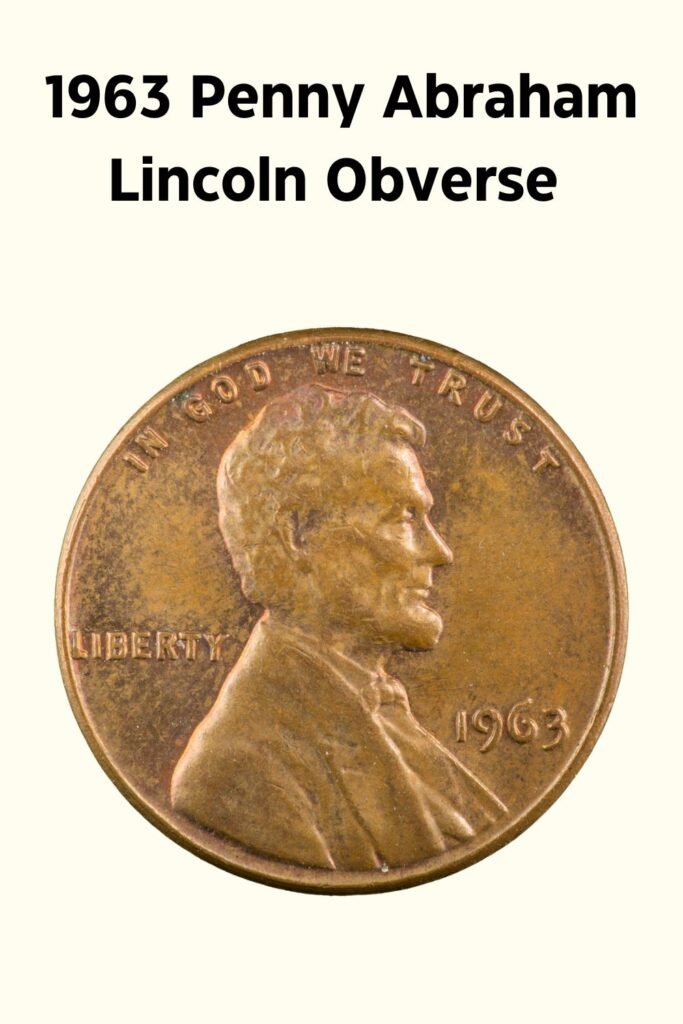
- Right facing portrait of Abraham Lincoln
- “LIBERTY” to the left of Lincoln’s bust
- The words “IN GOD WE TRUST” above Lincoln’s head along the edge
- The mint date “1963” at the bottom, below Lincoln’s bust
- The mint mark, if present, below the mint year
1963 Lincoln Penny Reverse:
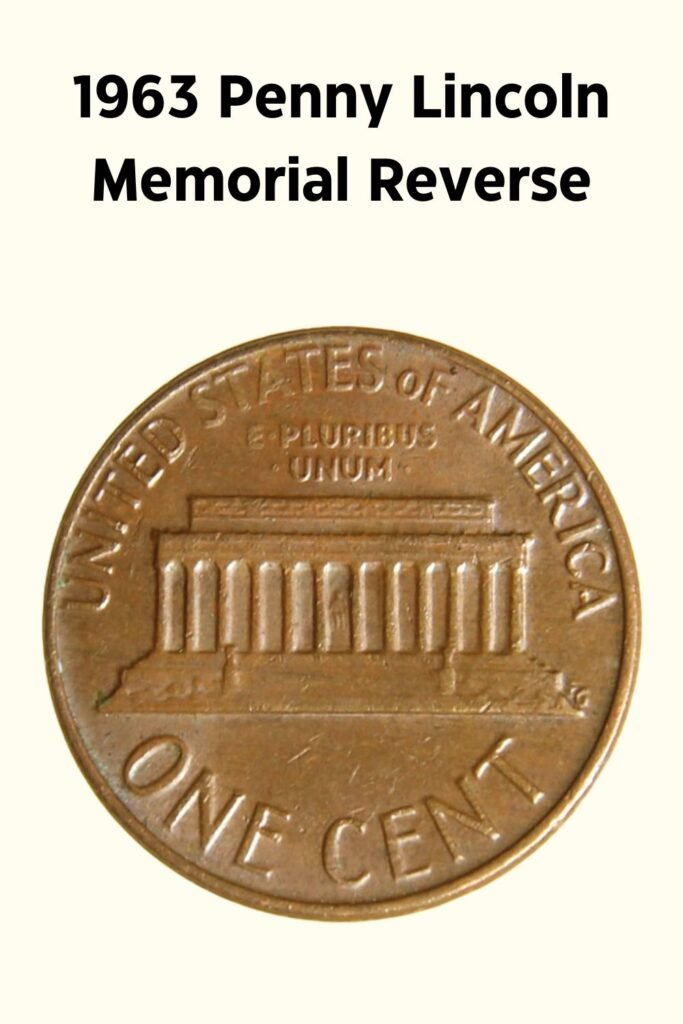
- The depiction of the Lincoln Memorial at the center
- The words “UNITED STATES OF AMERICA” along the top edge
- “E PLURIBUS UNUM” above the Lincoln Memorial
- The denomination “ONE CENT” displayed at the bottom
- The designer, Frank Gasparro’s initials “FG” on the right of the staircase
Coin Composition, Size & Dimensions
The 1963 Lincoln penny is composed of 95% copper and 5% zinc, the bronze alloy which gives the coin its characterized reddish-brown luster and a weight of approximately 3.11 grams.
Besides, the penny has a diameter of 19.05 millimeters, and a thickness of 1.52 millimeters, with a plain edge. These characteristics remain the same regardless of where the 1963 penny was struck.
Finding the Value of 1963 Lincoln Penny (5 Key Factors)
A 1963 Lincoln penny in circulated condition generally fetches $0.01 to $0.10. However, rare versions with high grades or special mint errors or features can significantly increase its value up to $7,500 or more!
Let’s understand all the factors that determine a 1963 Lincoln penny coin value in detail.
1. Coin Grading and Condition
The condition of a 1963 Lincoln penny is the first and most important factor that impacts its value. Generally, coins are graded on a scale from PO-1 to MS-70, with higher grades (MS-65 or above) indicating better condition.
The 1963 Lincoln Penny in MS-67 grades or higher can be worth $300 to a few thousand dollars, while the lower-grade coins are worth only a few dollars.
2. Coin Toning & Color
Toning, which is a sub-aspect of condition, can also impact a 1963 penny value. Cents that have grown a brown patina due to oxidation are generally worth less than the pennies with reddish tone.
Based on the amount of discoloration, the pennies are categorized in the following designations:
- Red (RD): These pennies have over 95% of their original shiny red luster and the most collectible ones. While uncirculated red 1963 pennies are worth $5 to $10, high-grade examples can fetch up to $2,000 to $3,000 or more.
- Red-Brown (RB): 1963 pennies with a mix of red and brown patches due to partial oxidation are graded RB. They are less valuable than pure red cents, generally worth around $2 to $5. The value for high-grade cents ranges from $10 to $100!
- Brown (BN): BN-graded 1963 pennies have turned completely brown due to extreme oxidation. These coins are the least valuable, often worth only a few cents. However, some collectors can still pay hefty prices if the coin is in the highest grade or has a mint error.
3. Mint Marks & Mintage
The mintage of a 1963 penny produced at different locations and identified by the mint mark can affect the coin’s value. Here is a breakdown of the 1963 Lincoln Penny mint marks and mintage.
- 1963 No Mint Mark Penny: The Philadelphia Mint produced around 754,110,000 pennies, identified with no mint mark. These cents generally fetch $0.01 in average or circulated condition, but uncirculated coins can be worth $2, with higher grades fetching $100 or more.

- 1963 D Lincoln Penny: The Denver mint produced 1,774,020,400 pennies, identified by the “D” mint mark. These coins are more common than the Philadelphia cents. While the circulated 1963 D Penny is still valued at $0.01, mint state coins can fetch $5 to $30 and even more for higher grades.
I’ve prepared this 1963 Lincoln Cent value chart to help you find your coin’s average value based on coin grades (red coins) and mint marks.
| Coin Grades | Condition Details | 1963 No Mint Mark Penny Value | 1963 D Wheat Penny Value |
| Poor (0) to Extremely Fine (XF45) | Significant wear, faded but visible details | Face Value | Face Value |
| Almost Uncirculated (AU50) to Mint State (AU58+) | Slight wear on highest points, visible marks or blemishes | 20 cents to 50 cents | 10 cents to 30 cents |
| Mint State (MS60 – MS64) | Uncirculated with minimal wear | $2 – $9 | $1 – $7 |
| Mint State (MS65 – MS66+) | Nearly flawless with very minor imperfections | $10 – $250 | $7 – $400 |
| Mint State (MS67 – MS67+) | Well-preserved with no major flaws | $300 – $1,500+ | $500 – $2,800+ |
| Mint State (MS68 or Above) | Nearly perfect, luster, no major marks or flaws | N/A | N/A |
4. 1963 No Mint Mark Lincoln Penny Proof
The United States Mint produced around 3,075,645 proof 1963 Lincoln pennies for collectors at the San Francisco Mint. Due to low mintage and unique finish, proof pennies can be worth more than the regular business strikes.
You can spot these proof coins by their distinctive, high-quality finish and mirrored background. Depending on the finish, the 1963 penny proof coins are categorized in three designations:
- Regular PR Proofs: These cents have the standard proof finish with a mirror-like field. Slightly more valuable than regular pennies, the value for 1963 PR proofs ranges from $5 to $10, with higher PR-grades (PR-69) reaching $50 to $60.
- Cameo (CAM) Proofs: Cameo proofs display a stronger contrast between the devices (frosted raised design) and the reflective background. They can fetch around $40 to $100 for the highest-grade proof cents.
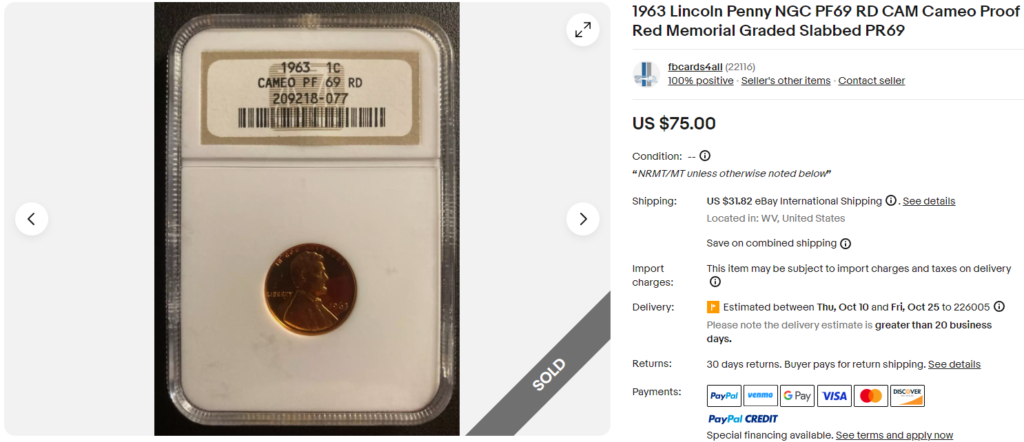
- Deep Cameo (DCAM) Proofs: These coins have the sharpest contrast between the frosted and mirrored fields! While low-grade coins are worth $10 to $50, PR70 DCAM 1963 pennies have sold for around $40,000, like this rare coin that sold for a staggering price of $39,100 on Heritage Auctions.
5. Valuable Mint Errors of 1963 Lincoln Penny
Minting errors can greatly enhance the value of a 1963 Lincoln penny. Some of the most notable errors include:
1963 D Penny Double Die Obverse (DDO)
When the 1963 penny obverse minting die has doubled design, it transfers the doubling on the coin’s surface. You can observe the doubling on the mint date and inscriptions “LIBERTY” and “IN GOD WE TRUST.” A 1963 DDO coin can be worth $15 to a few hundred dollars, depending on the condition.
Blow-Hole Defective Planchet
This error features a blow-hole on the 1963 Lincoln Cent, which cuts out a part of the coin’s design. While the error is visible to naked eyes, another identifier is its reduced weight. An MS64RB-graded 1963 penny with this error was sold for over $250 in a coin auction!
Struck on a Silver Dime Planchet
This rare error happened when a 1963 Lincoln Penny was struck on a silver dime planchet instead of the copper blank. It can be identified by its silvery gray color and its different size and weight. An AU58 example of a 1963 1C struck on silver dime sold for $940 on Heritage Auctions!
1963-D Lincoln Cent Re-punched Mint Marks
When the mintmark “D” is struck more than once on a 1963 penny’s obverse, the result is its blurry or doubled appearance. RPMs can increase a penny’s value to $3 to $15, depending on the prominence of the error and the coin’s condition.
Want to Sell Your 1963 Lincoln Penny?
After assessing your old 1963 Lincoln Memorial Cent, you can sell it to a local buyer offline or put it up for sale on online platforms like eBay or Etsy. To learn more about where to sell antiques, hop on to my detailed guide now!
Note: This article is intended for informational, educational, and entertainment purposes only. Some images are illustrative and may not represent actual brands, products, or related entities. All trademarks, product names, brand logos, packaging, and other intellectual property referenced remain the exclusive property of their respective owners. Any brand mentions or references are provided solely for descriptive and educational context and do not imply any formal or commercial association.



